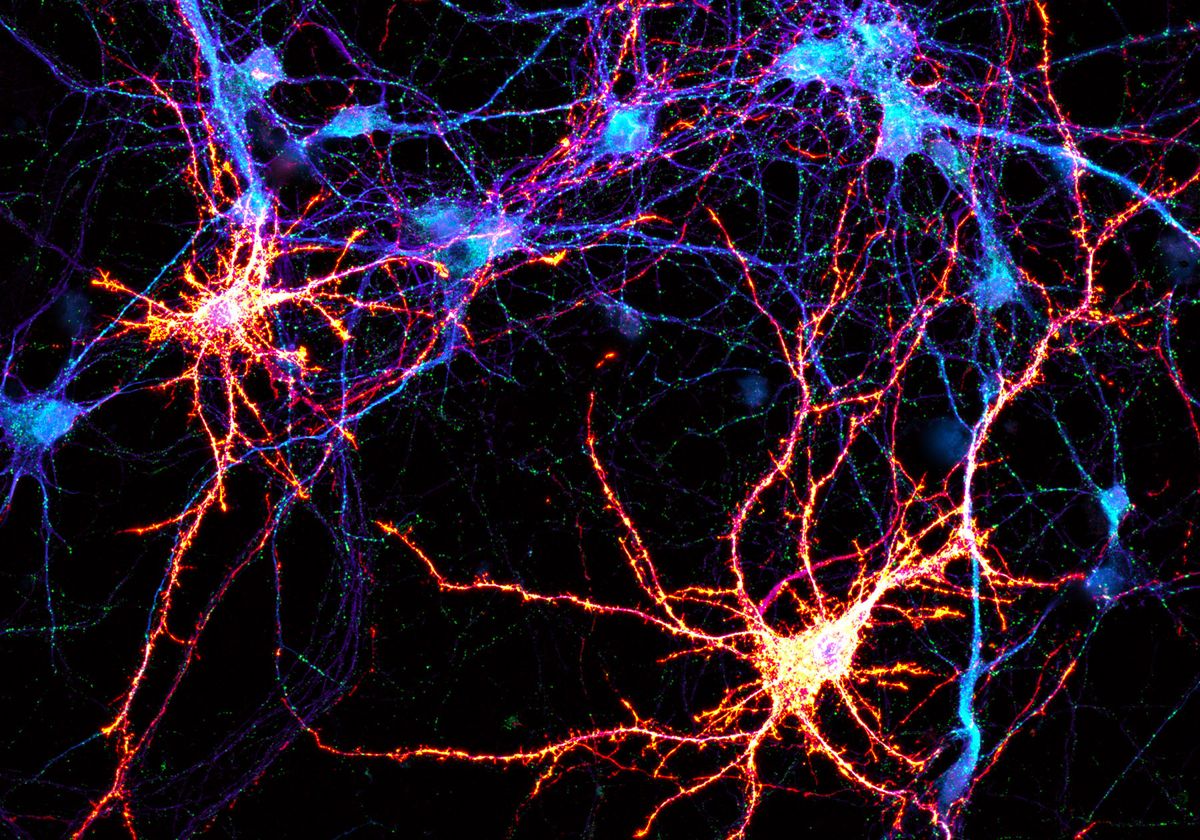Lighting Up the Neuronal Cytoskeleton
By combining microscopy techniques with genome engineering, scientists revealed the complexities of the presynaptic actin cytoskeleton.

In the 1950s, advances in microscopy techniques allowed scientists to visualize synaptic communication between two brain cells for the first time.1,2 However, many details beyond the general synapse structure, such as how the presynaptic and postsynaptic terminals are organized, remained elusive.
“If we want to understand how the synapse functions, we have to understand its organization,” said Christophe Leterrier, a neurobiologist at the Aix Marseille University.
To achieve this goal, Leterrier and his team decided to look at the actin cytoskeleton in the presynaptic terminal, a specialized region of the neurons’ axons where the organization of this network of protein filaments is poorly understood, according to Leterrier.
Imaging the actin cytoskeleton in presynapses is not easy as the abundance of the protein in the postsynaptic terminal often obscures its presence in the presynaptic one, Leterrier explained. Genome editing provided his team with an approach to circumvent this obstacle. Using a CRISPR-Cas9 system, they tagged endogenous actin to enhance its visibility in just a few cells of their hippocampal neuron cultures.3 They then labeled the cells with markers to highlight different neuronal components such as the axon, cell body, and presynapses, and imaged the cells using a fluorescence microscope.
The resulting image revealed how two CRISPR-edited neurons extend their actin-rich neuronal processes and make contacts with unedited neurons in the background. Along the blue neurons’ projections, tiny green dots mark the location of the presynapses, where the actin cytoskeleton forms distinct nanostructures that Leterrier’s team characterized using more advanced microscopy techniques.
“Now we've come up with a blueprint and we are categorizing actin in different types of structure,” Leterrier explained. “[This] provides a basis to explain how actin can shape and transform the synapse.”
- De Robertis ED, Bennett HS. J Biophys Biochem Cytol. 1955;1(1):47-58.
- Palay SL. J Biophys Biochem Cytol. 1956;2(4 Suppl):193-202.
- Bingham D, et al. J Cell Biol. 2023;222(10):e202208110.

